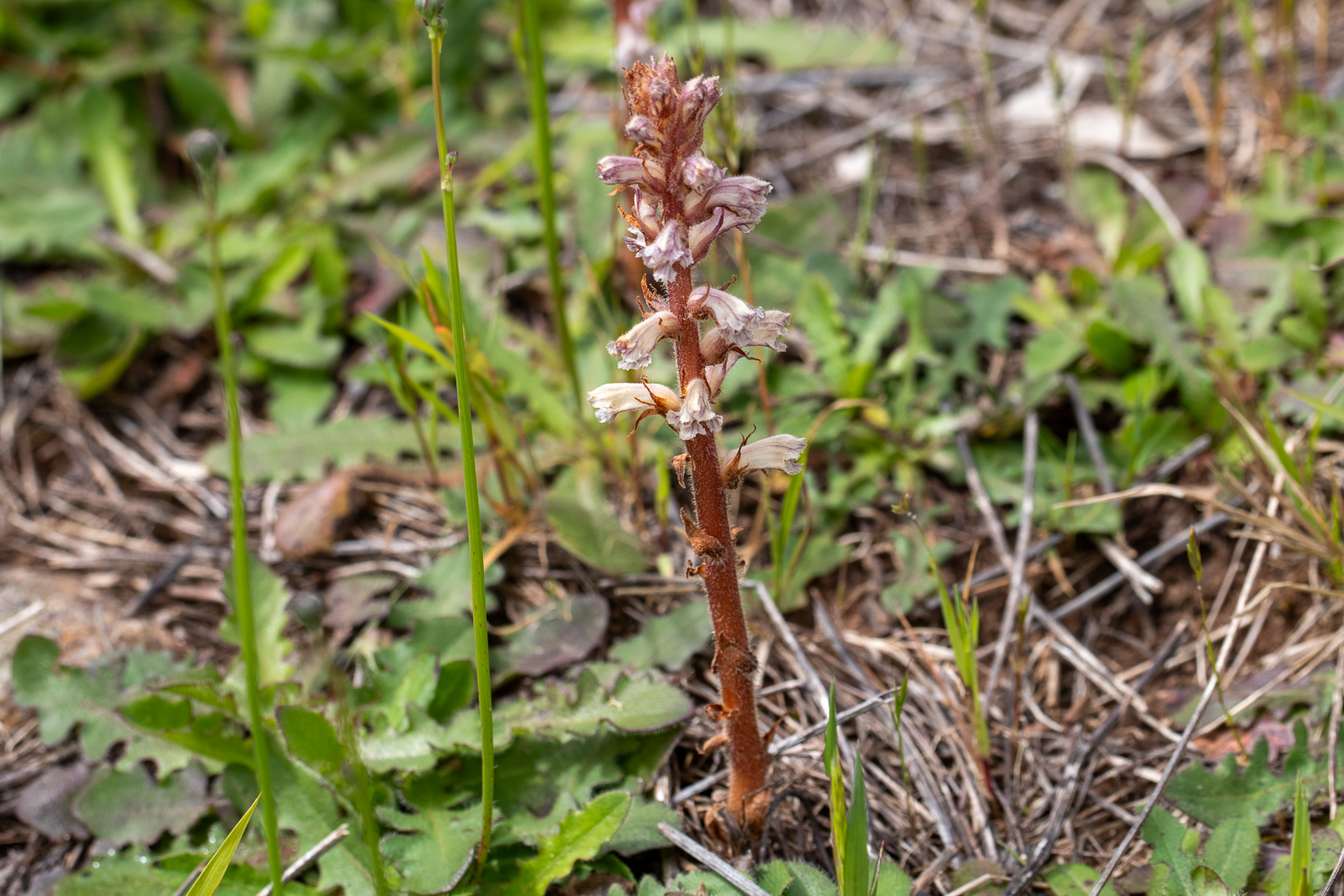At several of our slow walk sites we’ve noticed an unusual plant; the Orobanche or Broomrape.
Orobanche is parasitic plant — it doesn’t photosynthesize, instead it extracts nutrients and water from a host plant.
There are three Broomrapes for us to be aware of locally:
- Branched Broomrape (O. ramosa) is a serious weed, posing a threat to a range of Australian crops. It’s not known to be in Victoria.
- Common Broomrape (O. minor), also called Clover Broomrape, is also an introduced species. This is the plant we have been noticing on our walks. It is common and widespread in southern Australia but not shown to have any serious impacts, though is considered a weed.
- Australian Broomrape (O. cernua var. australiana) is a native species and rare in Victoria.
It would be interesting if we found Australian Broomrape during our walks, so we’re paying attention as the stems and flowers appear this spring. The plants growing nearby can help us identify the likely host and there are some small differences in the plants that we’re looking for. We found a good resource on the Mallee Conservation website for those interested in being able to identify the species.






